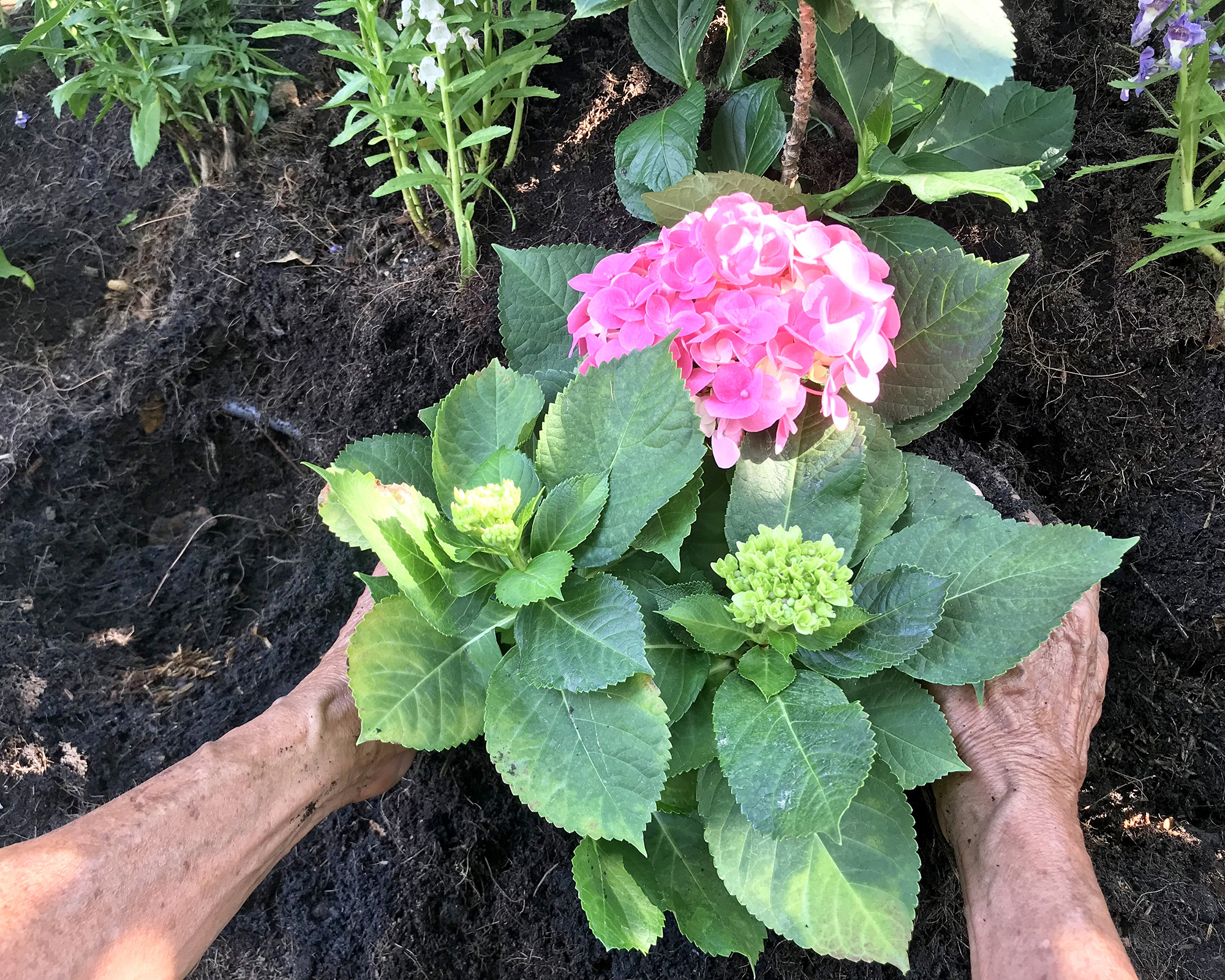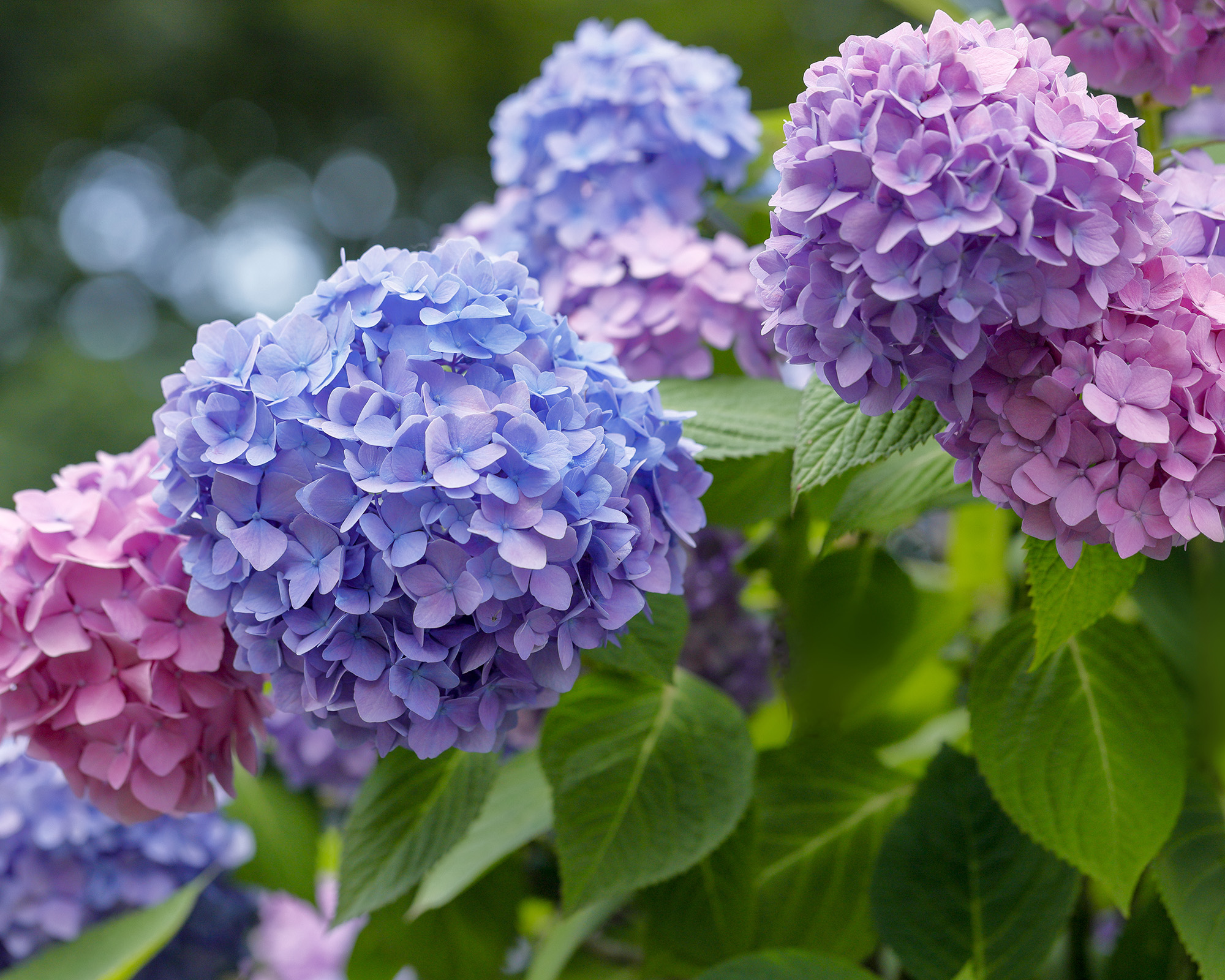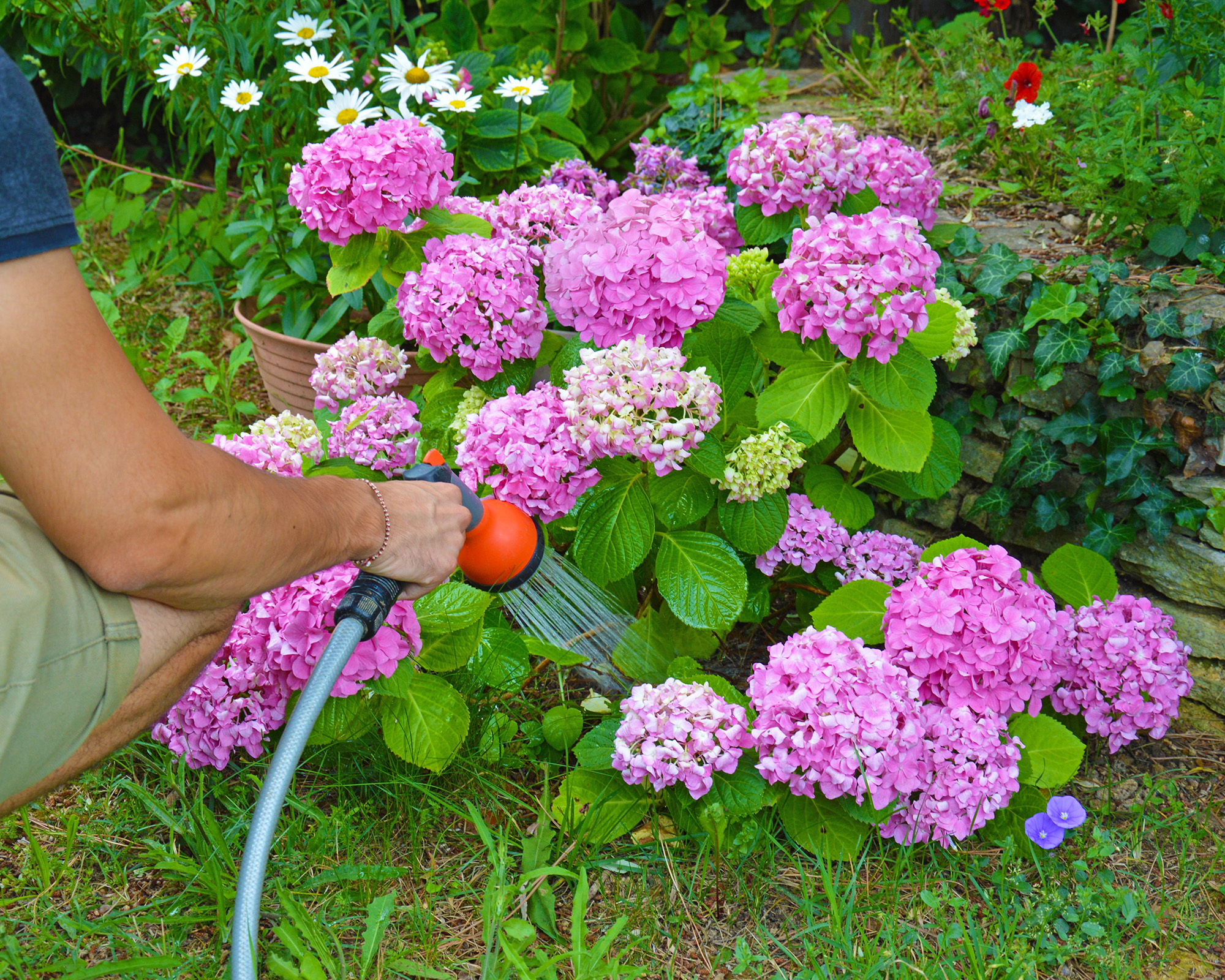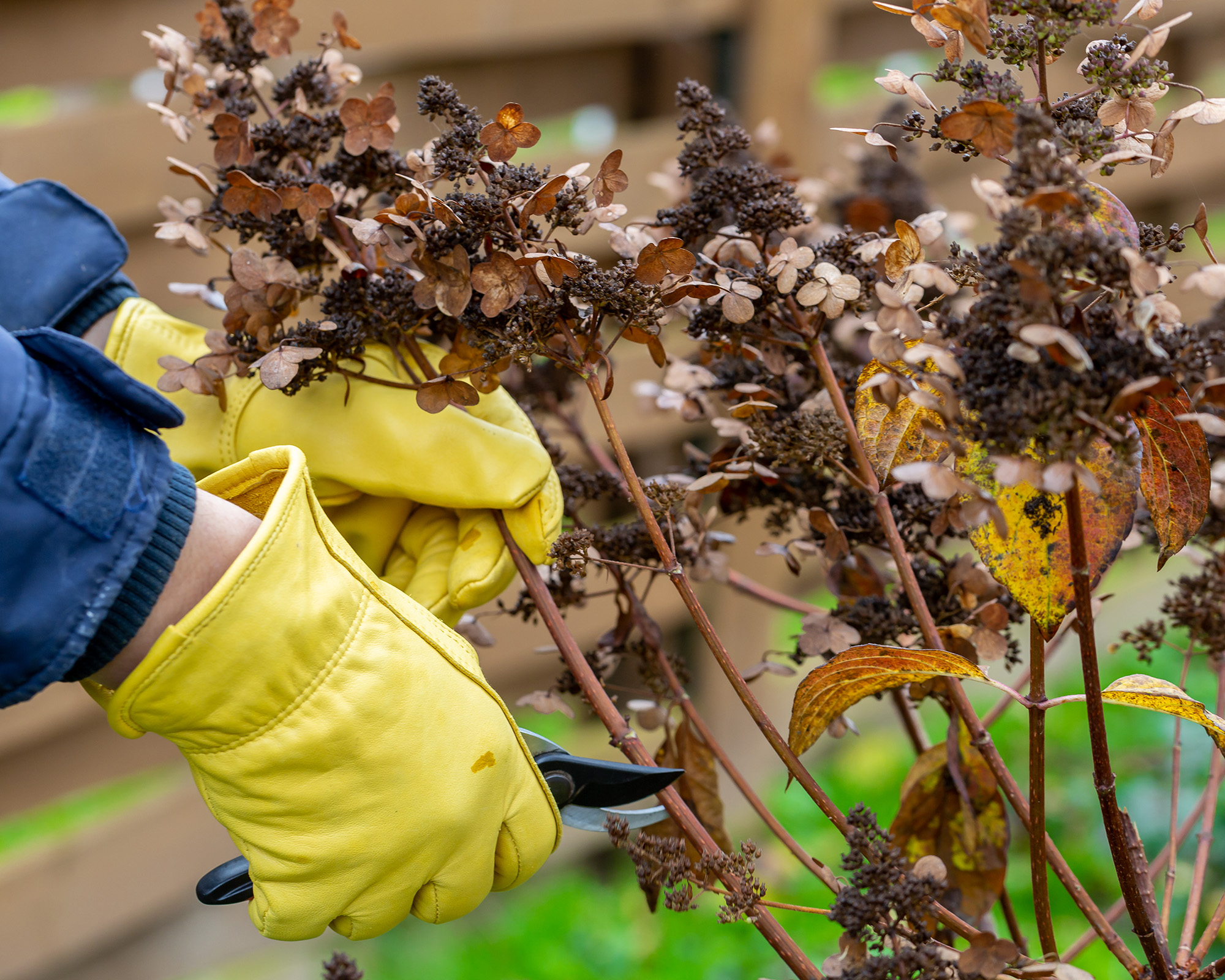7 Hydrangea Care Mistakes To Avoid If You Want Stunning Blooms
Hydrangeas are heroes of the summer garden, but these common care errors will stunt plants' growth potential and result in poor flowering.

With their big, blowsy blooms and unmistakable leaves, hydrangeas are standout garden shrubs.
With proper hydrangea care, plants will last for decades. However, while they are not high-maintenance, they do have a few particular care needs that are often overlooked or neglected.
There are numerous types of hydrangeas you can grow, including mophead, lacecap, oakleaf, panicle, smooth, and climbing. All have beautiful flowers, comprising larger clusters of little blooms that form a colorful mass.
If possible, perform a soil test before planting so you can purchase a variety that will like the environment and not require rigorous care.
Avoid these common hydrangea care mistakes to ensure healthy, long-lasting plants with abundant flowers.

1. Planting In The Wrong Soil
The right soil type is critical to healthy, happy shrubs. Hydrangeas prefer a rich, loamy soil that is moist but well-draining. They will not thrive in soil that lacks nutrients or is too dry or soggy.
Plants prefer even moisture but should not have their roots in boggy soil, which could cause root rot. They should also not be installed in rocky soil that drains too quickly and leaves the roots dry.
Sign up for the Gardening Know How newsletter today and receive a free copy of our e-book "How to Grow Delicious Tomatoes".
If you have planted your hydrangea in poor soil, you can amend it using organic matter.
2. Expecting Blue Flowers
Soil pH has a significant effect on the flowers' appearance, and you may be disappointed if the color is not what you expected.
In acidic soil with a pH of 6 or below, hydrangeas produce blue flowers, while alkaline soil with a pH of 7 or above will cause the blooms to grow pink. Neutral soils will produce blooms with a purplish tinge; it could also result in a plant with both pink and blue blooms
If you wish blue flowers and your soil is alkaline, add a soil acidifier or ammonium sulfate. This will lower the pH and make it more acidic. Organic methods of lowering soil pH are coffee grounds, and fruit and vegetable peels.

3. Incorrect Light Levels
Each variety of hydrangea is slightly different in its lighting needs, and positioning them to receive too much or too little light is a common mistake.
- The commonly grown bigleaf varieties – mophead and lacecap – do best where they receive morning sun and afternoon shade or dappled light.
- Oakleaf varieties will not bloom in a full sun site and need shade for much of the day.
- Panicle varieties prefer sun nearly all day but with a little protection from the hottest rays.
These preferences aren’t for every USDA hardiness zone, however. The plants that need a bit of shade will do fine in full sun in a temperate region. The hotter zones will find the plants do better in areas with afternoon shade.
4. Not Enough Water
Thinking that hydrangeas are drought-tolerant is a common error, as the plants require regular, consistent watering.
How often to water hydrangeas depends on the species, your soil type, the plant's location in sun or shade, and the local climate. However, generally, it is recommended they get 1 inch (2.5cm) of water a week, either by rainfall or irrigation.
Soil type is a big factor in how much moisture hydrangeas receive. Drier soils will require more water, while moisture-retentive soils will need less. The soil should not dry out completely before you water – evenly moist soil is perfect.
Water hydrangeas deeply to help the plants develop a healthy, deep root system.

5. Overfeeding
Fertilizing hydrangeas in the spring with an all-purpose plant food is all they need for healthy growth, but there are a few rules to follow:
- Mopehead and lacecap hydrangeas are acid lovers, and so using an acid fertilizer with a low phosphorus number helps produce the blue flowers
- Failing to water in a granular form, using too much of the food, or not diluting a liquid formula will cause burning.
- Ground-applied fertilizers can burn roots and foliar feeds can burn the leaves.
- It is important to follow the manufacturer's instructions to add the right amount of fertilizer.
- To avoid burning the roots, apply ground formulas just outside the root zone.
- A slow-release food is effective and safe, or use organic methods of feeding such as peat moss, compost, and sulfur mixed and applied to the root zone.
6. Overzealous Pruning
Hydrangeas don’t need to be pruned very much. You can take out dead branches at any time, but the timing of pruning live material depends upon the variety.
If the plant blooms on old wood, prune it in summer or early fall. For hydrangeas that bloom on new wood, prune in late winter to early spring. If the plant blooms on both old and new wood, you may prune it at any time.
To prune hydrangea bushes, prune stems back to a large bud and shorten any stems to shape the plant. But prune lightly.

7. Poor Planting
Hydrangeas are not usually purchased at full-size, so pay careful attention to the mature size on the planting tag so you don’t overcrowd it. Overcrowding leads to lack of air circulation and improper formation of the plant.
Additionally, do not plant under a tree whose roots will sap all the moisture and nutrients, leaving the hydrangea without its needs met.
Install the plant carefully initially. Dig the hole twice as wide and deep as the root ball. Install the plant at the same level it was in its nursery pot. Backfill and water the soil well.

Bonnie Grant is a professional landscaper with a Certification in Urban Gardening. She has been gardening and writing for 15 years. A former professional chef, she has a passion for edible landscaping.
- Melanie GriffithsEditor in Chief
- Amy DraissDigital Community Manager
